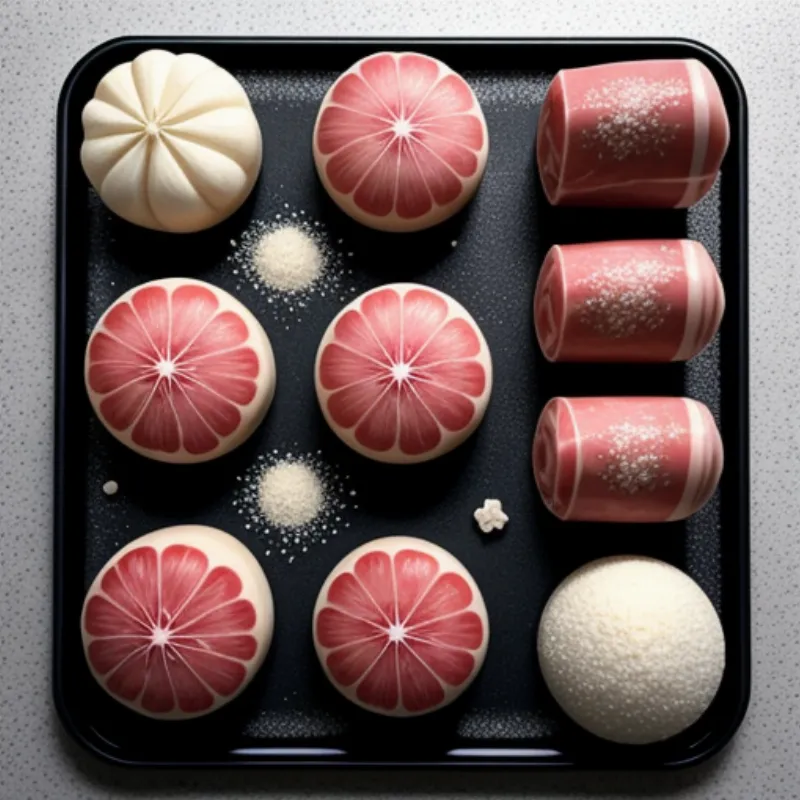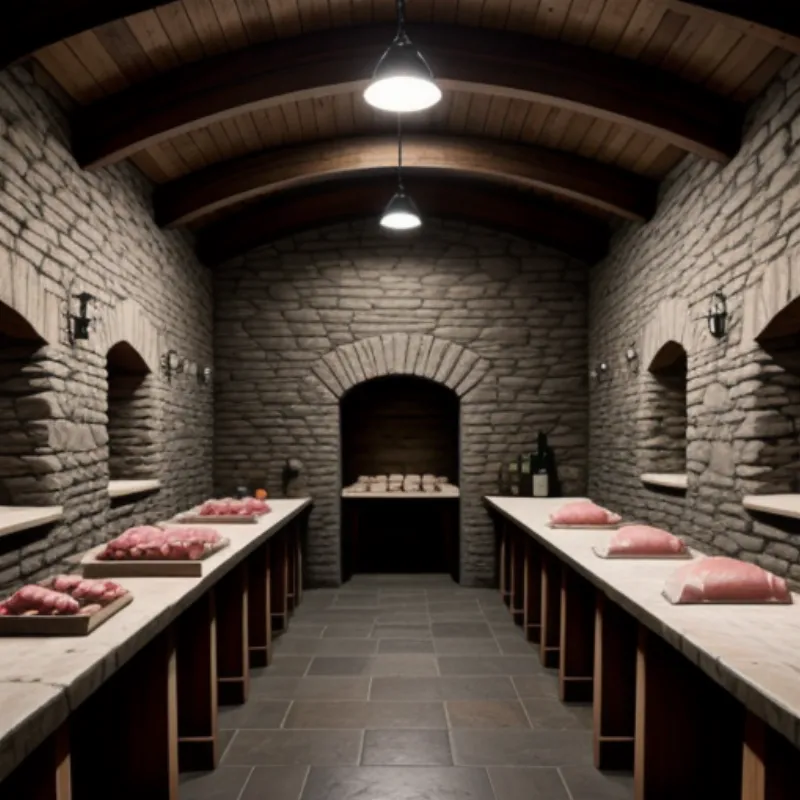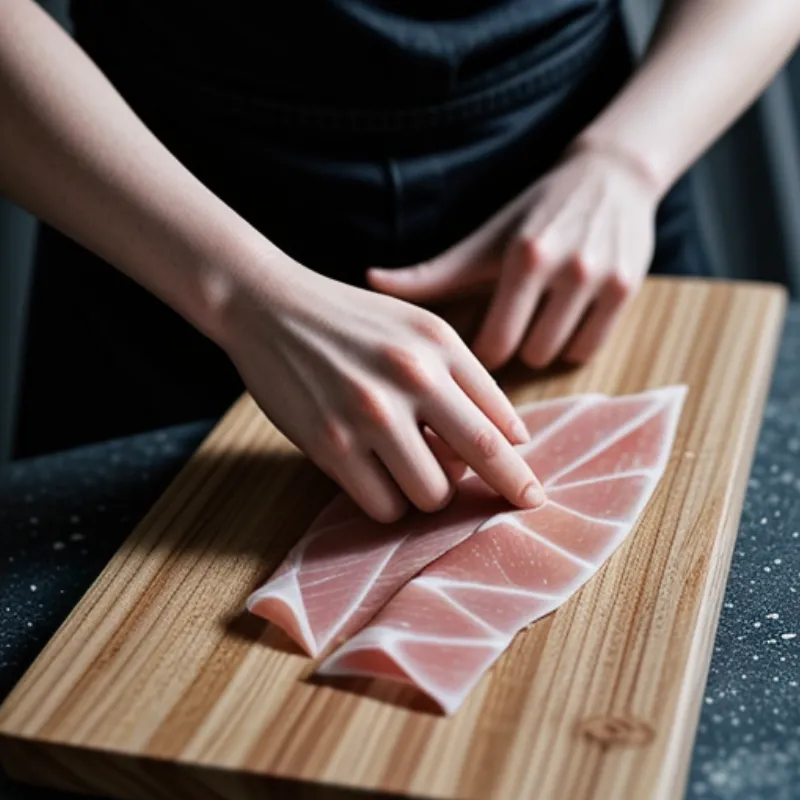Prosciutto, with its delicate, melt-in-your-mouth texture and rich, savory flavor, is a true culinary masterpiece. While the idea of curing meat at home might seem daunting, making your own prosciutto is an achievable feat for even a novice home cook. In this comprehensive guide, we’ll walk you through each step of the process, demystifying the art of prosciutto-making and empowering you to create your very own Italian delicacy.
What is Prosciutto?
Prosciutto, meaning “ham” in Italian, is a dry-cured ham traditionally made from the hind leg of a pig. The curing process involves salting, air-drying, and aging the meat, which results in its characteristic concentrated flavor and firm, almost buttery texture.
Making prosciutto is a labor of love, but the reward is well worth the wait. Imagine slicing into a homemade prosciutto, its deep rosy hue a testament to months of careful curing, and savoring the complex, umami-rich flavors that have developed over time.
Gathering Your Ingredients and Equipment
Making prosciutto requires just a few key ingredients, but the quality of these ingredients is paramount.
Ingredients:
- Pork Leg: One fresh, bone-in pork leg (approximately 10-14 pounds). Opt for a heritage breed pig for the best flavor.
- Sea Salt: About 4 pounds of non-iodized sea salt, plus additional salt for curing.
- Curing Salts: 20 grams of pink curing salt (Prague Powder #2), which contains sodium nitrite and helps prevent bacterial growth.
- Black Pepper: Freshly ground black pepper to taste.
- Optional Flavorings: You can add other aromatics like juniper berries, rosemary, garlic, or bay leaves for additional flavor complexity.
Equipment:
- Large, Non-reactive Container: A large plastic or stainless steel container to hold the pork leg during curing.
- Meat Grinder: To grind the spices if you prefer a finer texture.
- Cheesecloth: To wrap the prosciutto during the drying process.
- Butcher’s Twine: To hang the prosciutto during air-drying.
- Sharp Boning Knife: For trimming the pork leg.
- Humidity and Temperature Controlled Environment: Ideally, a curing chamber or a cool, dark space with good ventilation and a humidity level between 60-80%.
 Making Prosciutto Ingredients
Making Prosciutto Ingredients
A Step-by-Step Guide to Making Prosciutto
1. Preparing the Pork Leg
-
Trimming: Begin by trimming any excess fat from the pork leg, leaving a thin, even layer. This fat will help protect the meat during the long curing process.
-
Salting: In a large bowl, combine the sea salt, curing salt, black pepper, and any additional desired spices. Rub this mixture thoroughly all over the pork leg, ensuring it penetrates every crevice.
-
Resting: Place the salted pork leg in the large container and refrigerate for 2-3 days per pound of meat, flipping it daily and redistributing any accumulated liquid. This initial salting process draws out moisture and helps preserve the meat.
2. Casing and Hanging the Prosciutto
-
Wrapping: After the initial salting period, remove the pork leg from the container and rinse off any excess salt. Pat it dry with paper towels. Wrap the leg tightly in cheesecloth, securing it with butcher’s twine.
-
Hanging: Hang the wrapped prosciutto in your curing chamber or designated curing space. The ideal temperature for curing prosciutto is between 55-65°F (13-18°C), with a humidity level of 60-80%. Maintaining these conditions is crucial for proper drying and flavor development.
 Hanging Prosciutto
Hanging Prosciutto
3. The Art of Aging: Patience is Key
-
Aging Time: The aging process for prosciutto is lengthy, typically ranging from 9 to 18 months, or even longer for a more intense flavor. During this time, the meat will gradually lose moisture, its flavor concentrating and deepening.
-
Monitoring Humidity: Regularly monitor the humidity levels in your curing space. If the humidity drops too low, mist the prosciutto with water to prevent it from drying too quickly.
-
Mold Formation: It’s normal for a thin layer of white mold to develop on the surface of the prosciutto during aging. This mold is beneficial and contributes to the flavor development. However, if you notice any black or green mold, consult a professional charcutier or butcher immediately, as this could indicate spoilage.
4. Savoring the Reward: Enjoying Your Homemade Prosciutto
-
Testing for Doneness: After the minimum aging period, you can test the prosciutto for doneness by inserting a thin, sharp knife into the thickest part of the meat. If it smells fragrant and feels firm to the touch, it’s ready.
-
Slicing and Serving: Once cured, use a very sharp knife to thinly slice the prosciutto. Enjoy it on its own, as part of a charcuterie board, or use it to elevate sandwiches, pizzas, and pasta dishes.
Tips and Tricks for Success
-
Sourcing Quality Meat: Opting for high-quality pork from a reputable butcher is essential for achieving the best flavor and texture. Consider seeking out heritage breed pigs for a richer, more nuanced flavor profile.
-
Maintaining Consistent Conditions: Temperature and humidity fluctuations can negatively impact the curing process. Invest in a thermometer and hygrometer to monitor the conditions in your curing space and make adjustments as needed.
-
Patience is Paramount: Don’t rush the aging process. Allowing the prosciutto to cure slowly and naturally is key to developing its complex flavors and melt-in-your-mouth texture.
-
Embrace the Learning Curve: Making prosciutto at home is an art form that takes time and practice. Don’t be discouraged if your first attempt isn’t perfect. Each curing experience offers valuable lessons and brings you closer to mastering this ancient culinary tradition.
 Prosciutto Slicing
Prosciutto Slicing
FAQs About Making Prosciutto
Q: Can I make prosciutto without a curing chamber?
A: While a dedicated curing chamber offers the most control, you can create a suitable curing environment in a cool, dark cellar, pantry, or even a modified refrigerator. Maintaining consistent temperature and humidity is key.
Q: Is it safe to eat the white mold that forms on prosciutto?
A: Yes, the thin layer of white mold that often forms on dry-cured meats like prosciutto is a type of beneficial mold called Penicillium. It contributes to the characteristic flavor of the prosciutto and is safe to consume.
Q: How should I store homemade prosciutto?
A: Once sliced, wrap the prosciutto tightly in plastic wrap or butcher paper and store it in the refrigerator for up to two weeks. For longer storage, wrap it well and freeze for up to 3 months.
Elevate Your Culinary Repertoire with Homemade Prosciutto
Making prosciutto at home is a rewarding endeavor that allows you to experience the full depth of flavor this Italian delicacy has to offer. While it requires patience and attention to detail, the result—a culinary masterpiece crafted with your own two hands—is well worth the wait.
If you’re looking for other ways to experiment with flavors in your kitchen, check out our articles on How to Make Blueberry Vinaigrette, How to Make Sauce Zingara, or How to Make Brasadela. Happy curing!
